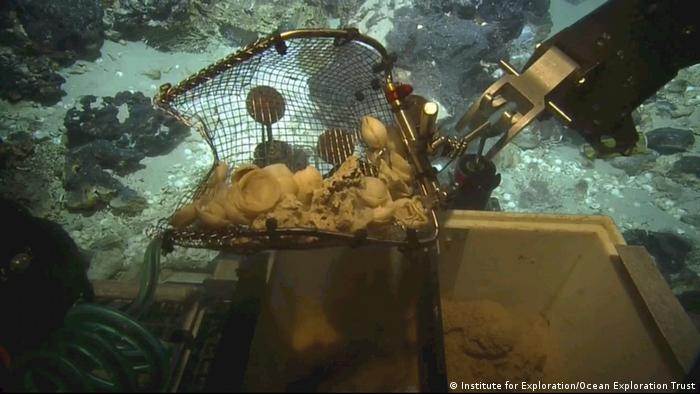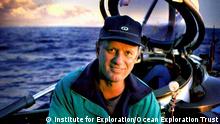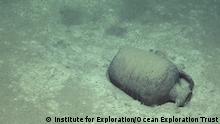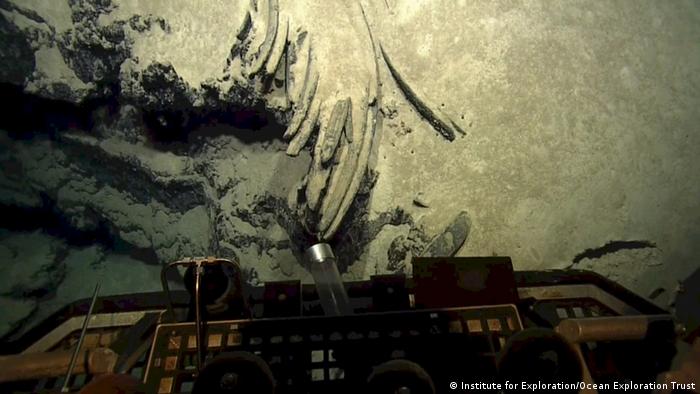紐約時報中英對照版無法顯示繁體字........
在火星上「開車」的人
BROOKS BARNES 報道 2012年09月12日
Monica Almeida/The New York Times
漫遊車駕駛員馬特·赫弗利和萬迪·湯普金斯與任務指揮員賈斯廷·林一起查看最新的數據。
加利福尼亞州帕薩迪納——在最近的一個工作日,36歲的馬特·赫弗利(Matt
Heverly)像其他很多年輕的父親一樣:5:30起床,大口地喝咖啡,給嬰兒準備了一瓶奶。他匆匆穿上牛仔褲和T恤,載着兩個兒子去日托所,中途去檢
查了他的豐田(Toyota)車剎車裝置,還跑了趟銀行。
然後他到了辦公室——操控一台價值25億美元的火星機械人。
按圖放大

Damian Dovarganes/Associated Press
參議員戴安娜·范斯坦、加州理工學院的讓-盧·沙梅歐以及美國宇航局的博巴克·菲爾多西。
赫弗利領導着一支由16名操作員組成的團隊,他們是美國航空航天局(NASA)屬下的噴氣推進實驗室(Jet Propulsion
Laboratory)的成員,共同負責操控“好奇號”(Curiosity)漫遊車穿過火星的蓋爾隕坑(Gale
Crater)。“好奇號”共有六個車輪,以鈈燃料為動力,車上裝有激光等能夠燒熔岩石的超前設備。這個重達2000磅的遙控裝置於8月6日登陸火星。8
月22日,赫弗利開始掌控方向盤——實際上是電腦鍵盤。
“駕駛”漫遊車可能是一個容易產生誤解的概念。首先,並沒有操縱桿和油門。 赫弗利和他的隊友通過輸入幾百個電腦指令來告訴漫遊車下一步該往哪兒走。
另外,他們不是實時駕駛:在火星的晚上,團隊會計劃接下來將“好奇號”送往什麼地方,火星的白晝開始時,他們會通過無線電傳輸發送指令。然後,這些駕駛員就回家,回到了地球上“不要忘記把垃圾帶出去”之類的世俗生活。
“你必須盡量不去想火星上發生了什麼事,當然這絕不可能,”39歲的駕駛員萬迪·湯普金斯(Vandi Tompkins)說道。在咖啡因的作用下,她顯得精神亢奮。
“根據你的指令,漫遊車可能會完成一次成功的行駛,”她說,“或者,你可能已經把國家資產從懸崖上扔下去了。”
或者,就像赫弗利說的,“昨晚我在火星上開車,今天我在修草坪,這太不真實了。”
“好奇號”的駕駛員只是NASA火星勘探項目中的一個小組。火星勘探項目負責調查火星的氣候和地質情況,對更老的、配置較為原始的機遇號
(Opportunity)漫遊車實施監控。火星項目的工作人員達到了幾千人,但是,上個月轟動全世界的,卻是這30多個“好奇號”團隊成員。當
時,NASA公布了他們慶祝“好奇號”登陸火星的視頻。
視頻顯示,身穿統一藍色馬球衫的團隊成員們,聆聽任務指揮官確認登陸成功——“我們在火星着陸了,哦,我的天哪!”——在場的人爆發出了雷鳴般的歡
呼聲,紛紛擊掌相慶。飛行指揮員博巴克·菲爾多西(Bobak
Ferdowsi)惹人注目地留着紅、白、藍相間的莫霍克髮型,他皺着眉頭說道,“我們看起來像是藍精靈。”
這裡在很多方面與其他辦公室相似:灰色的工廠地毯、熒光燈照明和狹窄的隔間,其中大部分都未加裝飾,除非你把紅牛飲料空罐算作裝飾品。一個小食品儲
藏室里有些成包的果脯零食。這裡偶爾會有一些家常便飯,還有一個辦公室壘球隊;近期的一場比賽中,每個人都戴上了莫霍克假髮來戲弄菲爾多西。
人們乘坐電梯時,會說“可以幫我按一下七樓嗎?我要去木星”,諸如此類的話。他們沒有開玩笑。七樓是朱諾號(Juno)的基地,那是太陽系最大行星的探索項目。(火星項目在六層和四層。)
他們含蓄地表達驕傲之情。56歲的約翰·賴特(John Wright)說,“我們所做的,絕對是最酷的工作。” 這位“好奇號”駕駛員彙報工作時戴着棒球帽,身穿T恤和短褲。
“你是做什麼工作的?哦,你是一個投資銀行家?那很特別啊,”賴特繼續說道。“我在火星上開車。”
這份工作也會很辛苦。“好奇號”的探索計劃長達幾年,至少在工作的頭三個月中,駕駛員將會按照火星時間生活和工作。一個火星日叫做一個Sol,比地
球上的一天長39分鐘35秒。這種時差累積很快就會特別明顯:兩周的時間裡,地球上的上午就變成了火星的夜晚。對於火星駕駛員來說,按照這樣的時間工作就
像是每三天向西跨越兩個時區,長期處在倒不過時差的狀態。
赫弗利說,“我現在嚴重睡眠不足,咖啡因已經不起作用了。”
工作日有嚴格的時間安排。“好奇號”在火星時間下午4點(在最近的一個周四,這個時間相當於太平洋時間下午1點44分)發回報告,說明行駛情況。分析人員有15分鐘時間來確認是否一切都順利。這是他們自己設定的時限,為了迅速為第二天的工作制定計劃。
大約400名參與火星計劃的科學家對數據進行評估,通常包括車載攝像機拍攝的照片。駕駛員與科學家開會,討論漫遊車下一步行駛的方向,也許是向一個
看起來很有趣的凹坑前進4.6米。因為他們駕駛“好奇號”時基本看不見,他們開始時需要慢慢移動,一天最多行駛9.2米;最終,他們一天能夠行駛92米。
一旦制定了計劃,駕駛員就會帶着3D眼鏡觀察火星地表圖,尋找潛在的危險狀況(“那塊岩石究竟有多危險?”),並用電腦動畫來模擬一條行進路線。然後,他們輸入幾百條命令執行第二天的行駛任務,對“好奇號”的運動往往要以厘米來計算。
臉色發白的赫弗利回顧了機遇號上發生的“噩夢般的場景”。有一天,科學家決定讓漫遊車倒退。根據赫弗利輸入的命令,機遇號知道它需要退到身後幾英尺遠的地方。
赫弗利說,“可是,它沒有簡單地向後倒退,它決定圍繞整個星球行駛一圈到達那個地方。”幸運的是,一個自動安全功能啟動,在漫遊車走得太遠之前把它停住了。
“那真是驚險的一天,讓人不敢再有絲毫大意,”赫弗利說,“‘親愛的,你今天在辦公室幹什麼了?’這樣一句普通的話被賦予了全新的意義。”
翻譯:許欣
Mow Yard. Drop Off Kids. Take a Drive on Mars.
By BROOKS BARNES September 12, 2012
在火星上“开车”的人
BROOKS BARNES 报道 2012年09月12日
PASADENA, Calif. — Matt Heverly,
36, started a recent workday as any young father might: up at 5:30,
gulping coffee, fixing a bottle for the baby. He threw on jeans and a
T-shirt and drove his two sons to day care. He stopped to get the brakes
on his Toyota checked and swung by the bank.
加利福尼亚州帕萨迪纳——在最近的一个工作日,36岁的马特·赫弗利
(Matt
Heverly)像其他很多年轻的父亲一样:5:30起床,大口地喝咖啡,给婴儿准备了一瓶奶。他匆匆穿上牛仔裤和T恤,载着两个儿子去日托所,中途去检
查了他的丰田(Toyota)车刹车装置,还跑了趟银行。
Then he went to the office ... to drive a $2.5 billion robot on
Mars.
然后他到了办公室——操控一台价值25亿美元的火星机器人。
Mr. Heverly leads a team of 16 drivers at
NASA’s
Jet Propulsion Laboratory
here. Together, they are responsible for steering a six-wheeled,
plutonium-powered rover called Curiosity across the Red Planet’s Gale
Crater. Equipped with futuristic tools like a laser that can vaporize
rock, the 2,000-pound robot arrived on Mars on Aug. 6, and Mr. Heverly
took the wheel — or computer keyboard, actually — on Aug. 22.
赫弗利领导着一支由16名操作员组成的团队,他们是美国航空航天局
(NASA)属下的喷气推进实验室(Jet Propulsion
Laboratory)的成员,共同负责操控“好奇号”(Curiosity)漫游车穿过火星的盖尔陨坑(Gale
Crater)。“好奇号”共有六个车轮,以钚燃料为动力,车上装有激光等能够烧熔岩石的超前设备。这个重达2000磅的遥控装置于8月6日登陆火星。8
月22日,赫弗利开始掌控方向盘——实际上是电脑键盘。

Monica Almeida/The New York Times
漫游车驾驶员马特·赫弗利和万迪·汤普金斯与任务指挥员贾斯廷·林一起查看最新的数据。
“Driving” a rover might be a
misleading term. There is no joystick or accelerator, for a start. Mr.
Heverly and his teammates tell the vehicle where to go next by entering
hundreds of computer commands.
“驾驶”漫游车可能是一个容易产生误解的概念。首先,并没有操纵杆和油门。 赫弗利和他的队友通过输入几百个电脑指令来告诉漫游车下一步该往哪儿走。
Also, the driving is not done in
real time: during the Martian night, the team plans where to send
Curiosity next and sends instructions via radio transmission as the Mars
day begins. Then the drivers go home, back to life on
Earth, with all of its “don’t forget to take out the garbage” mundanity.
另外,他们不是实时驾驶:在火星的晚上,团队会计划接下来将“好奇号”送往什么地方,火星的白昼开始时,他们会通过无线电传输发送指令。然后,这些驾驶员就回家,回到了地球上“不要忘记把垃圾带出去”之类的世俗生活。
“You have to try not to think
about what’s happening out there, which is, of course, completely
impossible,” Vandi Tompkins, 39, one of the drivers, said with
caffeinated exuberance.
“你必须尽量不去想火星上发生了什么事,当然这绝不可能,”39岁的驾驶员万迪·汤普金斯(Vandi Tompkins)说道。在咖啡因的作用下,她显得精神亢奋。
“The rover may be executing a
successful drive based on your instructions,” she said, “or you may have
just sent a national asset over a cliff.”
“根据你的指令,漫游车可能会完成一次成功的行驶,”她说,“或者,你可能已经把国家资产从悬崖上扔下去了。”
Or, as Mr. Heverly put it, “Last night I drove on Mars, today I mowed the lawn — it’s completely surreal.”
或者,就像赫弗利说的,“昨晚我在火星上开车,今天我在修草坪,这太不真实了。”
Curiosity’s drivers are only a
small group within NASA’s Mars exploration program, which investigates
the Martian climate and geology and oversees an older, more rudimentary
rover, Opportunity. Several thousand people work on the Mars program,
but it was 30 or so Curiosity team members who struck a worldwide chord
last month when NASA
shared video of their reaction to the rover’s landing.
“好奇号”的驾驶员只是NASA火星勘探项目中的一个小组。火星勘探项
目负责调查火星的气候和地质情况,对更老的、配置较为原始的机遇号(Opportunity)漫游车实施监控。火星项目的工作人员达到了几千人,但是,上
个月轰动全世界的,却是这30多个“好奇号”团队成员。当时,NASA公布了他们庆祝“好奇号”登陆火星的视频。
Wearing matching blue polo shirts
for the occasion, the team members were seen listening for a mission
controller’s confirmation of success — “We are wheels down on Mars. Oh,
my God!” — and breaking out in raucous cheers and high-fives. Bobak
Ferdowsi, a flight director who sports a mohawk with red, white and blue
streaks, now says, wincing, “We all looked like Smurfs.”
视频显示,身穿统一蓝色马球衫的团队成员们,聆听任务指挥官确认登陆成
功——“我们在火星着陆了,哦,我的天哪!”——在场的人爆发出了雷鸣般的欢呼声,纷纷击掌相庆。飞行指挥员博巴克·菲尔多西(Bobak
Ferdowsi)惹人注目地留着红、白、蓝相间的莫霍克发型,他皱着眉头说道,“我们看起来像是蓝精灵。”
In many ways, this is like any
other office: gray industrial carpeting, fluorescent lighting, cramped
cubicles that are mostly undecorated, unless you count empty cans of Red
Bull. A small pantry has packages of dried fruit snacks. There is the
occasional potluck dinner and an office softball team; at a recent game,
everyone wore fake mohawks to tease Mr. Ferdowsi.
这里在很多方面与其他办公室相似:灰色的工厂地毯、荧光灯照明和狭窄的
隔间,其中大部分都未加装饰,除非你把红牛饮料空罐算作装饰品。一个小食品储藏室里有些成包的果脯零食。这里偶尔会有一些家常便饭,还有一个办公室垒球
队;近期的一场比赛中,每个人都戴上了莫霍克假发来戏弄菲尔多西。
On the elevator, people say
things like “Can you press seven? I’m going to Jupiter.” They are not
kidding. The seventh floor is home to Juno, a mission to the solar
system’s largest planet. (Mars is on six and four.)
人们乘坐电梯时,会说“可以帮我按一下七楼吗?我要去木星”,诸如此类的话。他们没有开玩笑。七楼是朱诺号(Juno)的基地,那是太阳系最大行星的探索项目。(火星项目在六层和四层。)
There is also a quiet cockiness.
“We definitely win the coolest job contest at cocktail parties,” said
John Wright, 56, a Curiosity driver who had reported to work in a
baseball cap, a T-shirt and shorts.
他们含蓄地表达骄傲之情。56岁的约翰·赖特(John Wright)说,“我们所做的,绝对是最酷的工作。” 这位“好奇号”驾驶员汇报工作时戴着棒球帽,身穿T恤和短裤。
“What do you do? Oh, you’re an investment banker? Isn’t that special,” Mr. Wright continued. “I drive on Mars.”
“你是做什么工作的?哦,你是一个投资银行家?那很特别啊,”赖特继续说道。“我在火星上开车。”
The job can be grueling. For at
least the first three months of Curiosity’s multiyear exploration, the
drivers will be living and working on Mars time. The Martian day, called
a Sol, is longer than a day on Earth by 39 minutes and 35 seconds,
which adds up quickly; morning on Earth becomes night on Mars within a
couple of weeks. For the drivers, keeping this schedule is like moving
two time zones to the west every three days, tossing them into a
perpetual state of jet lag.
这份工作也会很辛苦。“好奇号”的探索计划长达几年,至少在工作的头三
个月中,驾驶员将会按照火星时间生活和工作。一个火星日叫做一个Sol,比地球上的一天长39分钟35秒。这种时差累积很快就会特别明显:两周的时间里,
地球上的上午就变成了火星的夜晚。对于火星驾驶员来说,按照这样的时间工作就像是每三天向西跨越两个时区,长期处在倒不过时差的状态。
“I’m kind of so sleep-deprived at this point that I’m beyond the point where caffeine helps,” Mr. Heverly said.
赫弗利说,“我现在严重睡眠不足,咖啡因已经不起作用了。”
Workdays have a rigorous time
structure. Curiosity beams down a report at 4 p.m. Mars time (one recent
Thursday, that meant 1:44 p.m. Pacific time) of how its drive went. A
group of analysts has 15 minutes to figure out if everything succeeded, a
self-imposed deadline to get the planning for the next day’s drive
moving quickly.
工作日有严格的时间安排。“好奇号”在火星时间下午4点(在最近的一个周四,这个时间相当于太平洋时间下午1点44分)发回报告,说明行驶情况。分析人员有15分钟时间来确认是否一切都顺利。这是他们自己设定的时限,为了迅速为第二天的工作制定计划。
Scientists — there are about 400
working on the Mars mission — evaluate the data, which usually includes
pictures from onboard cameras. Drivers arrive and meet with scientists
to discuss where the rover should head next, perhaps 15 feet toward an
indentation in the soil that looks interesting. Because they are
essentially driving Curiosity blind, they initially have to move slowly,
a maximum of 30 feet a day; eventually they will be able to cover about
300 feet a day.
大约400名参与火星计划的科学家对数据进行评估,通常包括车载摄像机
拍摄的照片。驾驶员与科学家开会,讨论漫游车下一步行驶的方向,也许是向一个看起来很有趣的凹坑前进4.6米。因为他们驾驶“好奇号”时基本看不见,他们
开始时需要慢慢移动,一天最多行驶9.2米;最终,他们一天能够行驶92米。
Once a plan has been formulated,
drivers stare at the images they have of the Martian terrain with 3-D
glasses to scout for potential pitfalls (“How afraid are we of that
rock?”) and use computer animation to simulate a route. Then they enter
hundreds of commands to execute the next day’s drive, which can require
calibration of movement in gradations of centimeters.
一旦制定了计划,驾驶员就会带着3D眼镜观察火星地表图,寻找潜在的危险状况(“那块岩石究竟有多危险?”),并用电脑动画来模拟一条行进路线。然后,他们输入几百条命令执行第二天的行驶任务,对“好奇号”的运动往往要以厘米来计算。
Mr. Heverly, turning white,
recalled “a nightmare scenario” with Opportunity. One day, scientists
decided that they wanted the rover to back up. Based on the commands Mr.
Heverly entered, Opportunity understood that it needed to return to a
spot a few feet back.
脸色发白的赫弗利回顾了机遇号上发生的“噩梦般的场景”。有一天,科学家决定让漫游车倒退。根据赫弗利输入的命令,机遇号知道它需要退到身后几英尺远的地方。
“But instead of simply backing
up, it decided to drive around the entire planet to get there,” Mr.
Heverly said. Luckily, an automated safety function kicked in and
stopped the rover before it could go very far.
赫弗利说,“可是,它没有简单地向后倒退,它决定围绕整个星球行驶一圈到达那个地方。”幸运的是,一个自动安全功能启动,在漫游车走得太远之前把它停住了。
“It was a really scary and really
humbling day,” Mr. Heverly said. “It gives a whole new meaning to ‘What
did you do at the office today, honey?’ ”
“那真是惊险的一天,让人不敢再有丝毫大意,”赫弗利说,“‘亲爱的,你今天在办公室干什么了?’这样一句普通的话被赋予了全新的意义。”
![[image]](http://si.wsj.net/public/resources/images/AM-AV001_TOSHIB_NS_20120927051204.jpg)











 Ballard shot to fame after 'discovering' the Titanic in 1985
Ballard shot to fame after 'discovering' the Titanic in 1985 Ballard and his team have found a range of artefacts
Ballard and his team have found a range of artefacts  Biological discoveries have been made as well - above we see what's believed to be fossilized whale bones
Biological discoveries have been made as well - above we see what's believed to be fossilized whale bones